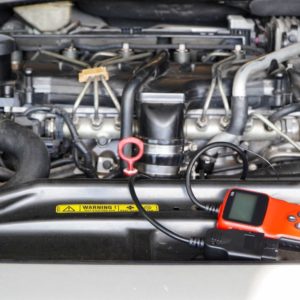Did you know that over a million vehicles were reported stolen in 2022? It’s the first time auto theft in the US has surpassed 1 million reported cases since 2008, and it’s also a 7% increase from the cases reported in 2021. These numbers are enough to make any vehicle owner nervous, but thanks to passive disabling devices, you can put some of your worries to rest.
What Is a Passive Disabling Device?
Passive disabling devices or passive anti-theft devices are security features that manufacturers install in some vehicles to help prevent theft.
The great thing about passive disabling devices is that they automatically turn on by themselves. Once you turn off the engine, remove the key from the ignition, and exit your vehicle, the passive disabling devices start working.
What Are Some Examples of Passive Anti-Theft Devices?
You might not know it, but your vehicle probably has at least one type of passive disabling device installed. Here are some examples:
Passive Door Lock
Running back to the parking lot to check if you’ve actually locked your vehicle is no doubt frustrating, but it’s something you have to do unless your vehicle has passive door locks.
Passive door locks are a standard feature on most vehicles with remote keyless entry, and they automatically lock the doors when the engine is off with all the doors shut and the key fob a distance away from the vehicle.
Audible Alarms
The most common passive disabling device you’ll find on most vehicles is probably the audible alarm system. Passive alarm systems activate once the vehicle is locked, and it triggers a blaring noise whenever it detects a threat. With active alarms, you’ll have to manually activate them by pressing a button or switch after you exit your vehicle. Otherwise, they won’t automatically turn on as passive alarms do.
If a vehicle thief tries to open your car door, the alarm will go off and draw attention to them. It should be enough to scare off most vehicle thieves, and it’s also a great way of alerting you to the danger.
PASSLock System
To prevent vehicle theft, some manufacturers install a PASSLock system that shuts off the fuel supply if the vehicle detects any attempts of starting the engine with the wrong key. After three failed attempts, the system will activate Long Tamper Mode, disabling the engine for ten minutes, which should be enough time to deter a pesky car thief.
Glass Breakage Sensors
It’s never a good idea to leave precious cargo in your vehicle, but it isn’t always something you can avoid. This is where glass breakage sensors come in handy. Usually located in the rear quarter panel and lift gate windows, glass breakage sensors trigger the alarm when an intruder breaks the glass.
Vehicle Inclination Sensors
While it’s much more common for thieves to break down windows and unlock car doors, there are some who try to tow vehicles away. To prevent this, some manufacturers install vehicle inclination sensors that trigger an alarm when they detect the vehicle being lifted.

What’s the Difference Between Passive and Active Anti-Theft?
While they’re both anti-theft devices that help protect your vehicle, they do have one key difference. Active anti-theft devices are non-passive disabling devices that you have to manually turn on.
How To Tell If Your Car Has an Anti-Theft Device
If you aren’t sure whether or not your vehicle has an anti-theft device, try checking your owner’s manual. You can also perform a manual inspection on your own. Look under your steering column for an alarm control module or check for any warning stickers on your windows indicating an active security system.
A light might also flash on your dashboard to indicate the passive alarm system taking effect after you exit your car. Of course, you can always check your trusted owner’s manual, where you can see all the features that came with your vehicle.
How Do Anti-Theft Devices Affect Your Car Insurance?
Not all insurance companies cover car theft, but those that do usually offer it through a comprehensive coverage package that’ll cost you a lot more than their basic offers. However, there are insurers who offer a low insurance premium if you have anti-theft devices installed in your vehicle.
With anti-theft devices installed in your vehicle, it’s basically a win-win for you and your insurer. Your vehicle is less likely to get stolen, so there’s also a lower chance of you making a theft-related insurance claim.
Other Tips To Prevent Car Theft
Passive disabling devices are great anti-theft devices, but they’re not the only way you can keep your vehicle safe. If you want a little more protection, there are some tips you can try.
For one, always make sure to lock your doors and windows. It might sound like a no-brainer, but it’s easy to forget once you get out of your vehicle.
As much as possible, try to park in well-lit areas, away from shady places where thieves often lurk. Aside from a passive disabling device, you can also invest in a tracking system that can help police track down your car if it ever gets stolen.
Of course, following these tips won’t guarantee the safety of your car, but they do help make it less of a target.
Any information provided on this Website is for informational purposes only and is not intended to replace consultation with a professional mechanic. The accuracy and timeliness of the information may change from the time of publication.















